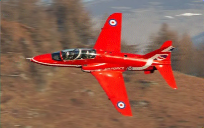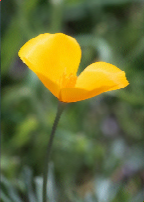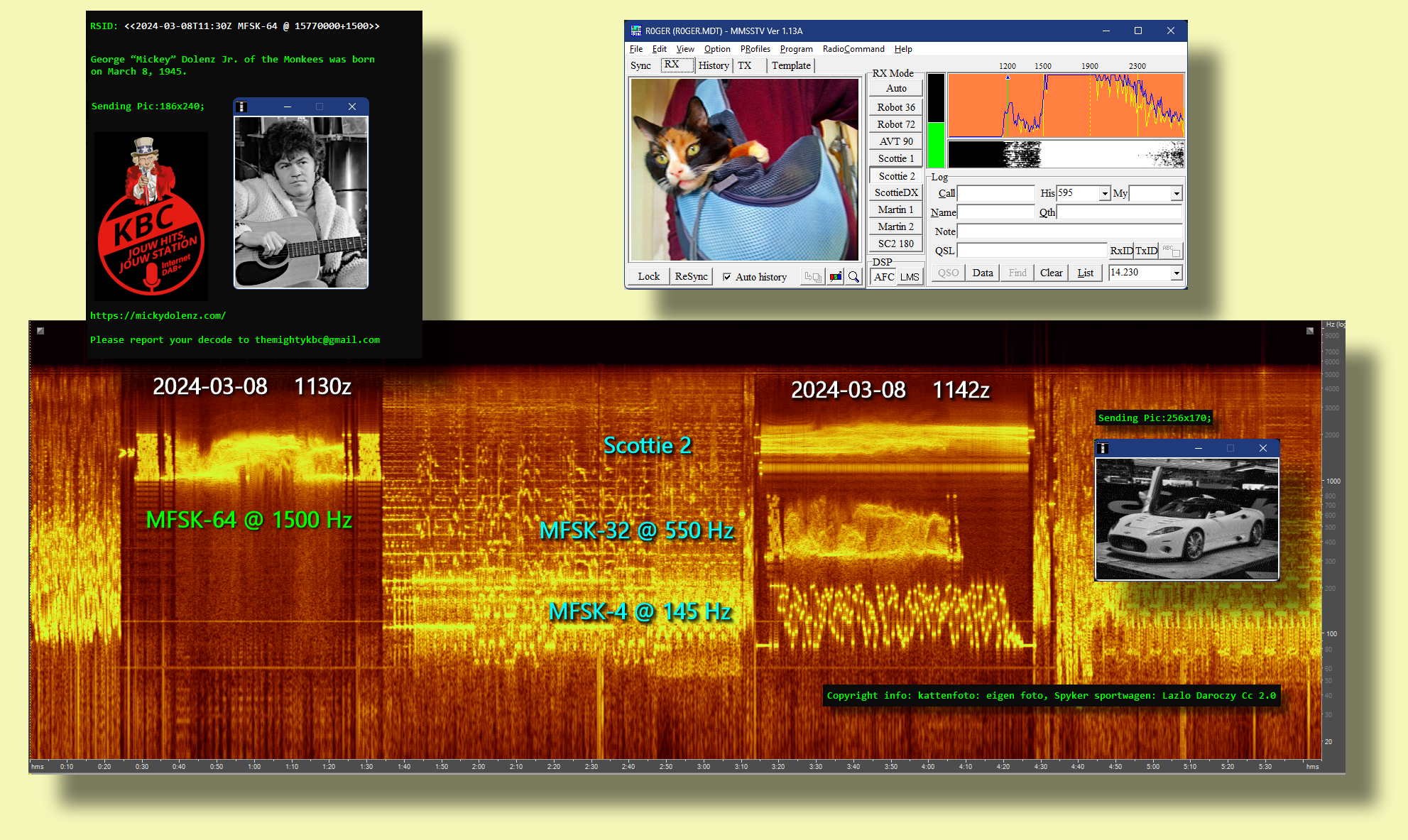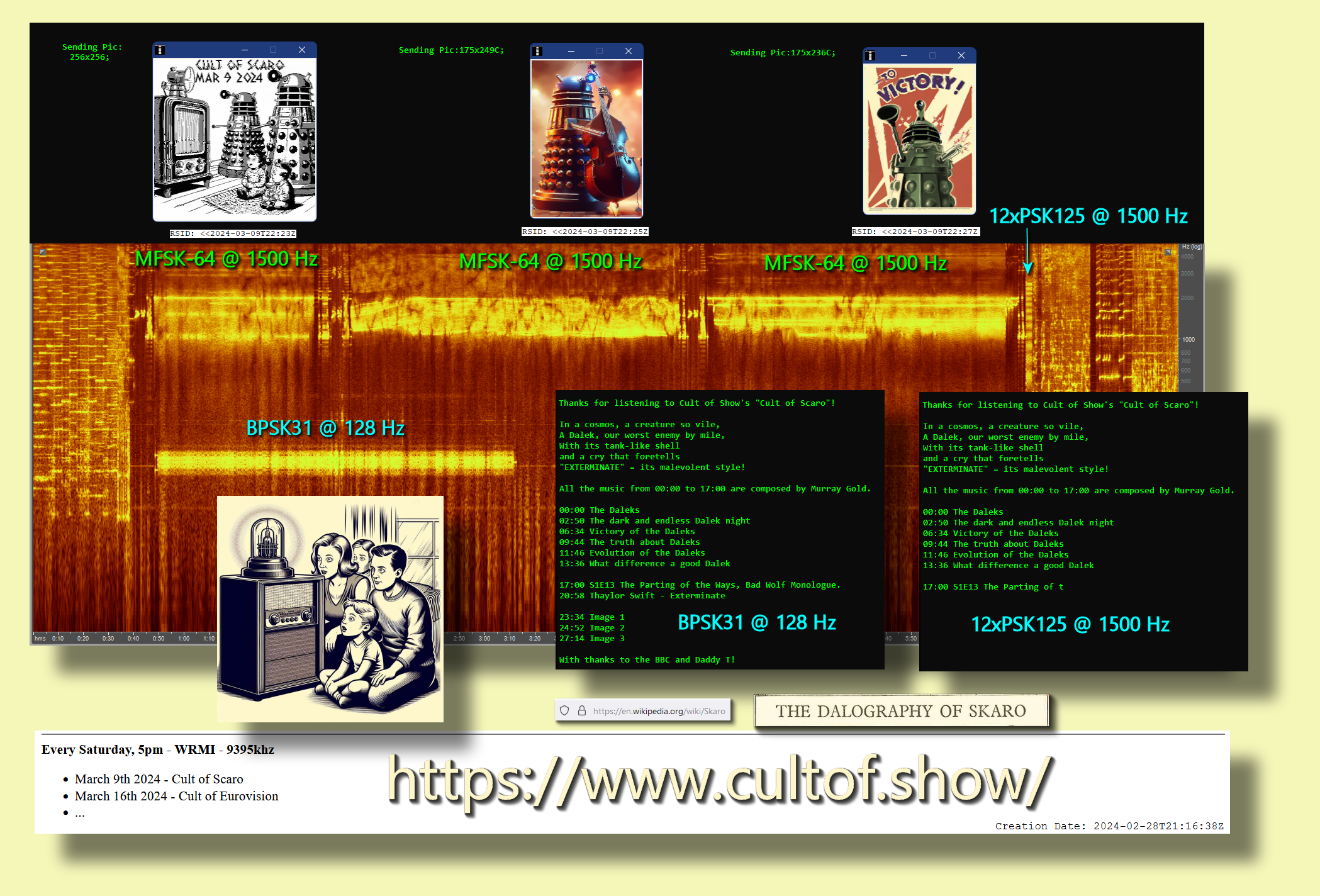
http://www.rhci-online.net/radiogram/radiogram.htm
https://github.com/GyanD/codexffmpeg/releases/tag/2023-03-05-git-912ac82a3c
set MyFiles=*.flac *.fla *.wav *.aif *.mp4 *.mp3 *.mp2 *.aac *.ogg
*.m4a

RSID: <<2024-03-08T00:31Z
MFSK-32 @
9265000+1500>>
THIS PROGRAM 344 OF SHORTWAVE RADIOGRAM WILL BE BROADCAST
1-6 MARCH 2024 AND REPEATED 8-13 MARCH 2024.
Welcome to program 344 of Shortwave Radiogram.
I'm Kim Andrew Elliott in Arlington, Virginia USA.
Here is the lineup for today's program, in MFSK modes as noted:
1:42 MFSK32: Program preview (now)
3:04 MFSK32: How to snoop on ET communications
networks
7:50 MFSK64: NASA Antarctica balloon mission
breaks record*
14:31 MFSK64: This week's images*
28:41 MFSK32: Closing announcements
* with image(s)
Please send reception reports to
radiogram@verizon.net
And visit http://swradiogram.net
We're on X/Twitter now: @SWRadiogram
From Phys.org:
How we could snoop on extraterrestrial communications networks
by Brian Koberlein, Universe Today
February 23, 2024
The conditions for life throughout the universe are so plentiful
that it seems reasonable to presume there must be
extra-terrestrial civilizations in the galaxy. But if that's
true, where are they? The Search for Extra-terrestrial
Intelligence (SETI) program and others have long sought to find
signals from these civilizations, but so far there has been
nothing conclusive.
Part of the challenge is that we don't know what the nature of an
alien signal might be. It's a bit like finding a needle in a
haystack when you don't know what the needle looks like.
Fortunately, any alien civilization would still be bound by the
same physical laws we are, and we can use that to consider what
might be possible. One way to better our odds of finding
something would be to focus not on a direct signal from a single
world, but the broader echoes of an interstellar network of
signals.
As noted in a 2022 paper posted to the arXiv preprint server, one
physical constraint is that there is a great deal of dust and
interstellar gas in the Milky Way. Since radio light penetrates
gas and dust better than visible light, the signals sent between
stars are likely to be microwave radio signals. Another fact is
that if you are traveling between the stars you need to know
where you are and where you are going. One way to do this is to
use pulsars as navigational beacons. In the paper, the author
argues that these can be combined as a broadband radio signal
from the hub of the alien civilization that contains X-ray pulsar
navigation metadata (XNAV).
One of the biggest challenges of detecting stray alien signals is
that they would likely be difficult to distinguish from random
noise. Even simple signals such as television broadcasts rely
upon a known protocol. Without that protocol, we can't decipher
the message. This is similar to the challenge of breaking the
Enigma code during World War II. One of the breakthroughs came
when it was realized that most messages contained a weather
report, so the message likely contained the German word for
weather. Metadata in an alien signal could serve a similar role.
If we know radio signals should contain XNAV metadata, then we
can use this as a starting point. In game theory this is known as
a Shelling Point.
The author outlines nine steps for how an interstellar
civilization might construct a pulsar navigation system, and what
the pattern of that network might be. By creating multiple
scenarios, we might be able to recognize certain patterns as
technosignatures. As the author notes, one limitation of this
approach is that any metadata scenario we imagine is still based
on how homo sapiens think, which might not be how an alien
intelligence sees things.
All of this is speculative, but it's worth considering. We will
only recognize an alien signal if we better understand the forms
they might take, and perhaps a few wild ideas like this one are
exactly what we need.
https://phys.org/news/2024-02-snoop-extraterrestrial-communications-networks.html
Shortwave Radiogram now changes to MFSK64 ...
RSID: <<2024-03-08T00:37Z
MFSK-64 @
9265000+1500>>
This is Shortwave Radiogram in MFSK64
Please send your reception report to
radiogram@verizon.net
From Phys.org:
Steward Observatory balloon mission breaks NASA record 22 miles
above Antarctica
by Hannah Hindley
February 26, 2024
Fifty-eight days ago, on a nearly windless morning on the Ross
Ice Shelf, a stadium-size balloon took flight above Antarctica,
carrying with it far infrared technology from the University of
Arizona's Steward Observatory in search of clues about the
stellar life cycle in our galaxy and beyond.
GUSTO—short for the Galactic / Extragalactic ULDB Spectroscopic
Terahertz Observatory—has now broken the record as NASA's
longest-flying heavy-lift balloon mission, which previously stood
at 55 days, 1 hour and 34 minutes. Currently, the enormous
zero-pressure balloon is riding stratospheric air currents
120,000 feet above the Antarctic continent, collecting far
infrared radio emissions from the matter between stars. GUSTO
surpassed the previous record at 10:22 a.m. Saturday Tucson time.
The faint terahertz signals that GUSTO seeks—with frequencies up
to a million times higher than the waves emitted by an FM
radio—are easily absorbed by water vapor in the Earth's
atmosphere before they can reach ground-based telescopes. Only
very dry or high-elevation places are well-suited for
observatories that catch some of those elusive photons, such as
the high Atacama Desert and the South Pole.
In search of drier conditions, "we are driven to go to more and
more remote places," said Steward Observatory astronomy professor
Chris Walker, principal investigator for the GUSTO mission, who
has worked on telescope projects in Antarctica since 1994.
Balloon science opens new possibilities for the rapidly evolving
field of terahertz spectroscopy, allowing observers to collect
far infrared signals before they are lost in the lower layers of
the atmosphere, at a fraction of the cost of a fully space-based
telescope.
Balloon telescopes such as GUSTO marry the strength of space
observation with the proximity of Earth-based operations, and
they come with unique challenges. A successful launch requires a
perfect weather window, with low wind speeds both on the ground
and in the stratosphere.
When conditions allow, the launch itself is a high-drama
spectacle. Support trucks driven out onto the ice shelf pipe
helium into the balloon, which luffs and flaps "like a sail" as
it fills, Walker said. "You begin to hear the rush of the helium
as the balloon inflates, and when they let it go, it rumbles as
it unfurls." This is a tenuous time—if there's an imperfection or
a wind shear, the balloon can shred. Of the record-breaking
project, Walker said "ballooning is the hardest thing I've done
professionally, but it's also the most rewarding."
If all goes well—as it did for GUSTO—the balloon lifts the
telescope inside its specialized gondola and carries it 22 miles
above the Earth to the remote seam between the stratosphere and
space. From here, astronomers rely on the circular currents of
wind above the Antarctic continent during the Southern Hemisphere
summer to carry the balloon in broad loops, collecting the light
signatures of cosmic chemicals.
Aboard GUSTO, emission line detectors collect molecular
information about the interstellar medium—the cosmic gas and dust
between stars that gives birth to new stars and galaxies.
"We were all part of the interstellar medium—every atom and
molecule in your body was at some point gas and dust flowing
between the stars," Walker said. To complicate matters, the
chemistry of the universe is different today than it was after
the big bang. To understand the story of star formation in the
universe—and by extension, the story of our own
origins—astronomers are interested in comparing the composition
of the interstellar medium in galaxies of different ages.
GUSTO aims to map out distribution of carbon, oxygen and nitrogen
in the young Milky Way and in the neighboring Large Magellanic
Cloud, which has characteristics comparable to much older
galaxies. A comparison of the two galaxies will help the GUSTO
team provide the first complete spectroscopic study of all phases
of the stellar life cycle, from the development of interstellar
gas clouds, to the formation of stellar nurseries, to the birth
and evolution of stars.
The GUSTO mission has traveled a long path to reach the
stratosphere. Walker's team submitted a NASA Explorer Program
proposal in 2014, and the project was selected by NASA in 2017.
The gondola for the mission was built by the Johns Hopkins
University Applied Physics Laboratory; Walker's team from Steward
Observatory at UArizona provided the telescope and
instrumentation—called the "payload"—working alongside various
partners including NASA's Jet Propulsion Laboratory.
In August 2023, the GUSTO team performed a hang test at the NASA
Columbia Scientific Balloon Facility in Palestine, Texas. From
there, the fully integrated gondola and payload, weighing roughly
as much as an SUV, traveled to Antarctica aboard a NASA C-130H
cargo aircraft—the first time a balloon mission had shipped fully
assembled by air. In Antarctica, the GUSTO team spent the fall
and winter months taking daily 12-kilometer trips from McMurdo
Station to the hangar to prepare the telescope for launch,
traveling aboard Antarctic vans with colossal low-pressure tires
across the frozen terrain.
On Dec. 31, a decade after the GUSTO team had submitted its
research proposal, the mission launched amid low winds and clear
skies, the white balloon billowing up against the backdrop of icy
Mount Erebus.
On the UArizona campus, GUSTO researchers continue to exercise
endurance in extreme conditions. While many members of the GUSTO
team traveled to McMurdo Station to prepare for the mission
launch, Craig Kulesa, Steward Observatory associate research
professor and GUSTO deputy principal investigator, "deployed" to
the Applied Research Building on the UArizona campus, Walker
said. From there, in a windowless room, Kulesa operates the
payload in flight, often sleeping on the floor and sharing the
controls with a Steward Observatory team.
Data arrives in real-time through a diverse network of
telecommunications technologies, including geosynchronous
satellites, Iridium and StarLink. GUSTO team members at UArizona
and Johns Hopkins work around the clock to monitor and remotely
manage the instrumentation and gondola, respectively. A 24-hour
Zoom line connects partners across continents, from Harvard to
Holland. ...
Provided by University of Arizona
Full text:
https://phys.org/news/2024-02-steward-observatory-balloon-mission-nasa.html
Image: The GUSTO balloon and payload
...
Sending Pic:96x252C;

This is Shortwave Radiogram in MFSK64
Please send your reception report to
radiogram@verizon.net
This week's images ...
People silhouetted against the sunset
at Papago Park, Phoenix,
Arizona, February 27.
http://tinyurl.com/2xm97ucx ...
Sending Pic:205x119C;

An installation at the Baotu Spring Lantern Show in Jinan,
Shandong province, China, February 19.
http://tinyurl.com/2do8t8yt ...
Sending Pic:208x140C;

Ice coats red plum trees during a cold snap in Suqian, Jiangsu
province, China, February 21.
http://tinyurl.com/2do8t8yt ...
Sending Pic:148x198C;

An empress brilliant hummingbird in Dagua, department of Valle
del Cauca, Colombia, during the 2024 Colombian Bird Fair,
February 15.
http://tinyurl.com/2do8t8yt ...
Sending Pic:163x202C;

People riding camels, silhouetted against the sunset in the
Sahara Desert in Morocco.
http://tinyurl.com/2886rycz ...
Sending Pic:217x114C;

One of five RAF Red Arrow jets flying low, as seen from Cammoch
Hill, Perthshire, Scotland.
http://tinyurl.com/28jk28pu ...
Sending Pic:204x128C;

A Mexican Gold Poppy at Arizona's Catalina State Park, February
24. http://tinyurl.com/23e5ucgw ...
Sending Pic:144x202C;

Our painting of the week is "Davos in the winter" (1923) by Ernst
Ludwig Kirchner.
http://tinyurl.com/266ojdpj ...
Sending Pic:214x169C;

Shortwave Radiogram returns to MFSK32 ...
RSID: <<2024-03-08T00:58Z MFSK-32 @ 9265000+1500>>
This is Shortwave Radiogram in MFSK32 ...
Shortwave Radiogram is transmitted by:
WRMI, Radio Miami International, wrmi.net
and
WINB Shortwave, winb.com
Please send reception reports to
radiogram@verizon.net
And visit http://swradiogram.net
Twitter: @SWRadiogram or
twitter.com/swradiogram
I'm Kim Elliott. Please join us for the next Shortwave
Radiogram.
http://www.rhci-online.net/radiogram/radiogram.htm
|
QTH: |
D-06193 Petersberg (Germany/Germania) |
|
|
Ant.: |
Dipol for 40m-Band & Boomerang Antenna 11m-Band |
|
|
RX for RF: |
FRG-100B + IF-mixer & ICOM IC-R75 + IF-mixer |
|
|
Software IF: |
con STUDIO1 - Software italiano per SDR on Windows 11 [S-AM-USB/LSB] + HDSDR 2.81 beta6 - for scheduled IF-recording |
|
|
Software AF: |
Fldigi-4.1.26 + flmsg-4.0.20 images-fldigifiles on homedrive.lnk |
|
|
OS: |
Mirosoft Windows 11 Home |
German W7 32bit + 64bit |
|
PC: |
ASUS S501MD (since 2023) [i7-12700 12th Gen. 12 x 2100 MHz] |
MSI-CR70-2MP345W7 (since 2014) [i5 -P3560 ( 2 x 2600 MHz) ] |
http://wiki.radioreference.com/index.php/Decoding_the_SW_Radiogram_Broadcasts
https://www.qsl.net/ve7vv/Files/Digital%20Modes.pdf
RSID: <<2024-03-
08T11:30Z MFSK-64 @ 15770000+1500>>
George “Mickey” Dolenz Jr. of the Monkees was born
on March 8, 1945.
Sending Pic:186x240;

https://mickydolenz.com/
Please report your decode to
themightykbc@gmail.com


https://app.box.com/s/kbdxb4c5lwpju0kpoi27aiwc35br2g2a
HFZone WRMI-B23 Human Readable SKedGrid ++